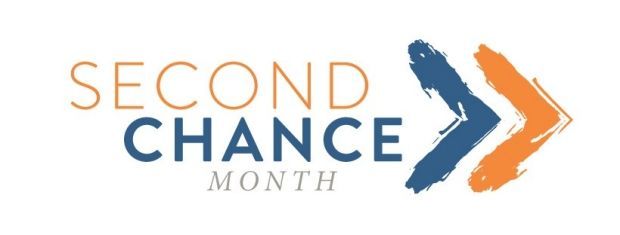President Biden Declares April 2023 Second Chance Month
Month highlights effort to support the safe and successful reentry of millions of people returning from incarceration every year in the US

Second Chance Month, established and observed in the United States during April since 2017, is a nationwide effort to raise awareness of the collateral consequences of a criminal conviction and unlock second chance opportunities for justice-involved individuals who are returning to their communities. In America, 95 percent of the nearly 2 million people incarcerated will be released at some point and will, therefore, return to our communities as our colleagues, neighbors, and co-workers.
Every year, nearly 600,000 people return from state and federal prison every year, and there are 40,000 or more federal, state, and local restrictions that can hinder their reentry. Studies suggest that people age out of crime, but we know young people from low-income backgrounds who commit crimes may never recover from an early misstep because of exclusionary policies. We know that there is a school-to-prison pipeline, and that some second chances are actually people's first chances. We know that expanding diversity at the table will bring us closer to achieving equity. Creating space at the decision-making table for people who involuntarily forfeited their citizenship is, therefore, imperative to deconstructing racism, reducing crime, and rebuilding marginalized communities.
In the Presidential Proclamation on Second Chance Month, President Joe Biden stated;
I believe in redemption — but for hundreds of thousands of Americans released from State and Federal prisons each year, or the nearly 80 million who have an arrest or conviction record, it is not always easy to come by. A criminal record can prevent them from landing a steady job, a safe place to live, quality health care, or the chance to go to back school. It can keep them from ever getting a loan to buy a home, start a business, or build a future. It can bar them from voting. As a result, three-quarters of formerly incarcerated people remain unemployed a year after their release — and joblessness is a top predictor of recidivism. We are not giving people a real second chance.
Our justice system should instead be based on the simple premise that once someone completes their sentence, they should have the chance to earn a living, build a life, and participate in our democracy as fellow citizens. Instead of giving people $25 and a bus ticket when they are released, we have to help them address their underlying needs as they re-enter society. It will keep families whole, build stronger and safer communities, grow our economy, and reduce recidivism long-term.
To do that, we need education, job, and substance use programs, during and after incarceration. My Administration is, for example, investing nearly $1 billion in job training, recovery, and reentry services. We are implementing changes to the Pell Grant program so people can earn a college degree while still in prison, jumpstarting new lives. Once they are released, we are helping them to find jobs rebuilding America through our historic infrastructure law; and we have expanded access to small business loans, so no one’s past keeps them from building a better future.
For more information available on support and resources dedicated to successful community reintegration programs, visit the National Reentry Resource Center.










